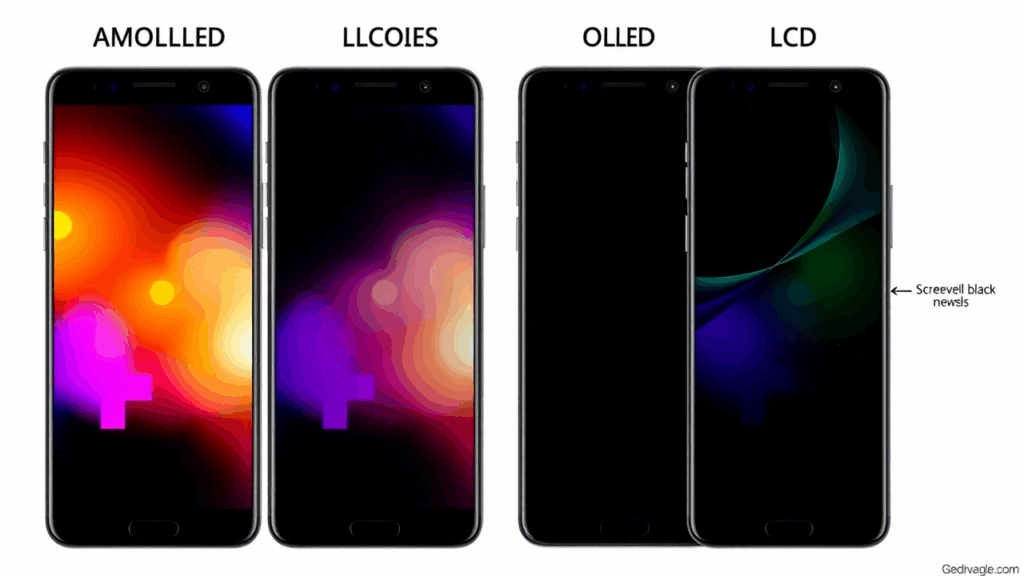AMOLED vs OLED vs LCD: A Simple Explanation
When shopping for a new smartphone, TV, or monitor, you’ll often come across terms like LCD, OLED, and AMOLED. These refer to different display technologies, each with its own strengths and weaknesses. If you’re unsure which one is right for you, let’s break them down in a simple, calm, and clear way.

1. LCD (Liquid Crystal Display)
How It Works
LCD screens use a backlight (usually LED) to illuminate liquid crystals. These crystals act as shutters, allowing or blocking light to create images. Since the backlight is always on, blacks appear more like dark grays.
Pros of LCD
✔ More affordable – Typically cheaper to produce.
✔ Brightness – Performs well in direct sunlight.
✔ No burn-in risk – Less prone to permanent image retention.
Cons of LCD
✖ Lower contrast – Blacks aren’t as deep since the backlight is always on.
✖ Thicker panels – Requires a backlight layer.
✖ Limited viewing angles – Colors may shift when viewed from the side.
Best for: Budget devices, outdoor use, and those who prioritize longevity over deep blacks.
2. OLED (Organic Light-Emitting Diode)
How It Works
OLED displays don’t need a backlight—each pixel emits its own light. When a pixel is turned off, it produces true black, leading to infinite contrast and vibrant colors.
Pros of OLED
✔ Perfect blacks – Pixels turn off completely, enhancing contrast.
✔ Thinner & flexible – No backlight means slimmer, even foldable screens.
✔ Better viewing angles – Colors stay consistent at wider angles.
Cons of OLED
✖ Burn-in risk – Static images (like logos) can leave permanent marks over time.
✖ Lower brightness (sometimes) – Can struggle in very bright environments.
✖ More expensive – Higher manufacturing costs.
Best for: High-end TVs, smartphones, and anyone who values deep blacks and rich colors.
3. AMOLED (Active Matrix OLED)
How It Works
AMOLED is a type of OLED with an active matrix (a TFT layer) for better control over individual pixels. Most smartphone “OLED” screens are actually AMOLED.
Pros of AMOLED
✔ Even better efficiency – Uses less power when displaying dark colors.
✔ Faster response time – Great for smooth animations and gaming.
✔ Vibrant colors – Often tuned for more saturation (some prefer this).
Cons of AMOLED
✖ Same burn-in risk – Like OLED, static elements can cause retention.
✖ Color accuracy (sometimes) – Some AMOLED screens oversaturate colors.
Best for: Premium smartphones (like Samsung Galaxy devices) and wearables.
Which One Should You Choose?
- For budget-friendly & reliable: LCD
- For deep blacks & vibrant colors: OLED / AMOLED
- For the best smartphone displays: AMOLED (common in flagship phones)
OLED and AMOLED are superior in contrast and efficiency, but LCDs remain a solid, cost-effective choice. If you watch a lot of HDR content or want the best image quality, OLED/AMOLED is the way to go.
Final Thoughts
Each display technology has its place, and the “best” one depends on your needs. Whether you prioritize affordability, brightness, or perfect blacks, there’s a screen out there for you.
Which type of display do you prefer? Let us know in the comments.


